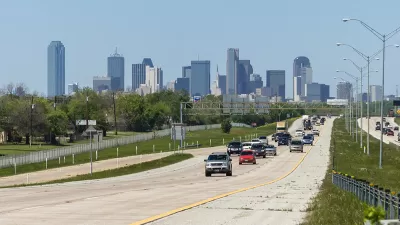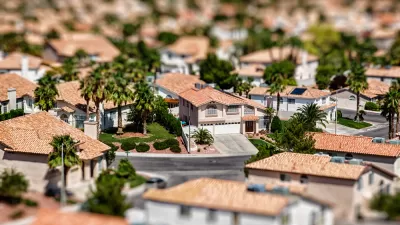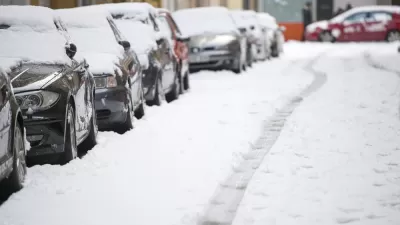Regional planners and Dallas officials aren't confident that the area's highway-centric worldview (and budget) will change anytime soon. The city's competitiveness in the national job market may be on the line.

While Dallas has taken some steps to build out its transit grid, the region as a whole is still firmly situated in what one city councilman calls "transportation planning right out of the 1950s." Here, Brandon Formby discusses why North Texas' transportation planning seems stuck in a mode that favors intensive road construction.
Despite aiming to "give people alternatives to driving everywhere solo," the North Central Texas Council of Governments' Mobility 2045 plan is heavy on the highways. "Less than 3 percent of the $42.9 billion in traditional federal and state transportation revenues in the plan goes toward projects built for pedestrians and bicyclists; less than 1 percent goes toward public transit."
One prevalent problem is the fact that current behavior must be used to predict future needs, even when it's impossible to know how people will want to get around thirty years from now. Are young people driving because they want to, or because they "have had to etch out their lives atop metropolitan areas that were built around the automobile long before they were born?"
Meanwhile, "with no major geographic barriers like mountain chains or an ocean on the North Texas landscape, there are few natural obstacles to restrict the region's sprawl." Officials expect the familiar pattern of road construction and suburban development to continue.
See also: Highway Expansion Could Be Calamitous for Dallas' City Center
FULL STORY: Will Dallas Ever Favor the Neighborhood Over the Highway?

Alabama: Trump Terminates Settlements for Black Communities Harmed By Raw Sewage
Trump deemed the landmark civil rights agreement “illegal DEI and environmental justice policy.”

Study: Maui’s Plan to Convert Vacation Rentals to Long-Term Housing Could Cause Nearly $1 Billion Economic Loss
The plan would reduce visitor accommodation by 25% resulting in 1,900 jobs lost.

Why Should We Subsidize Public Transportation?
Many public transit agencies face financial stress due to rising costs, declining fare revenue, and declining subsidies. Transit advocates must provide a strong business case for increasing public transit funding.

Paris Bike Boom Leads to Steep Drop in Air Pollution
The French city’s air quality has improved dramatically in the past 20 years, coinciding with a growth in cycling.

Why Housing Costs More to Build in California Than in Texas
Hard costs like labor and materials combined with ‘soft’ costs such as permitting make building in the San Francisco Bay Area almost three times as costly as in Texas cities.

San Diego County Sees a Rise in Urban Coyotes
San Diego County experiences a rise in urban coyotes, as sightings become prevalent throughout its urban neighbourhoods and surrounding areas.
Urban Design for Planners 1: Software Tools
This six-course series explores essential urban design concepts using open source software and equips planners with the tools they need to participate fully in the urban design process.
Planning for Universal Design
Learn the tools for implementing Universal Design in planning regulations.
Smith Gee Studio
Alamo Area Metropolitan Planning Organization
City of Santa Clarita
Institute for Housing and Urban Development Studies (IHS)
City of Grandview
Harvard GSD Executive Education
Toledo-Lucas County Plan Commissions
Salt Lake City
NYU Wagner Graduate School of Public Service





























